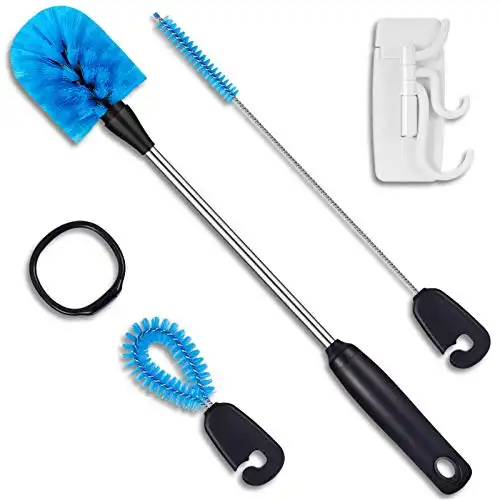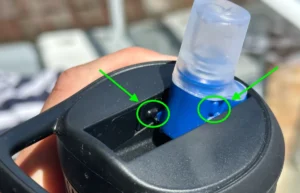Last week I noticed a bad smell coming from my Contigo bottle lid. Even though I wash it often, I suspected mold.
This was confirmed when I took apart the lid. So can you still use a water bottle with mold?
You shouldn’t use a water bottle that had mold in it because there might still be some remaining spores even after washing it. Some mold is harmless but other types can be highly toxic.
Drinking water bottles with mold may cause allergies, digestive and respiratory problems, which can be serious in immuno-compromised people.
Since it’s difficult to distinguish between mold types, it’s best to play it safe and clean and sanitize/de-mold the bottle before using it again.
This might involve dismantling the lid to get rid of hidden mold and treating with vinegar, bleach or some other mold cleaner.
Giving your moldy water bottle a thorough clean and preventing future mold is essential. It’s also good to know how to spot mold.
Why Is Mold in a Water Bottle Dangerous?
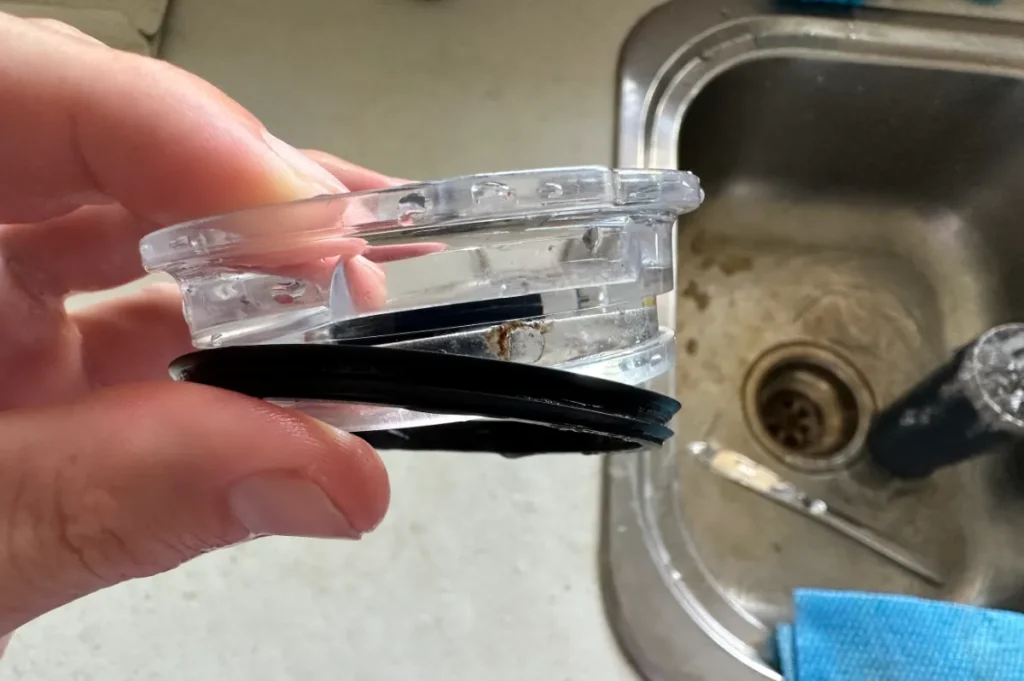
Mold in a water bottle or tumbler can be dangerous because it releases minute spores into the water and your lid’s crevices. The spores are called mycotoxins because they can cause a range of health issues in humans.
As the mold growth increases, it releases more mycotoxins, increasing your chances of getting sick.
The spores that mold releases are also classified as allergens and can cause the following:
- Red eyes
- Itchy skin
- Sneezing
- Blocked nose
- Asthma attacks if you have the condition
If you’re an allergy sufferer or are immuno-compromised, your symptoms may be more serious.
Depending on the type, mold can also cause:
- Headaches
- Diarrhea
- Vomiting
When I discovered that repeated mold exposure actually increases your sensitivity, I was more committed than ever to ensure my Nalgene water bottle (and all my other water bottles) was always properly cleaned.
How To Spot Mold In a Water Bottle
You can spot mold in a water bottle by the fuzzy black, green or grey biofilm. You might also notice black particles floating in the bottle or on the straw or spout. If your bottle smells earthy, musty or unpleasant, you may have mold.
Often you will smell the mold long before you can see it. I noticed this in my Hydro Flask bottle and in my Yeti bottles. They started to smell a bit musty even after washing and this was especially bad if the lids had remained closed.
Even though I couldn't see the mold I made sure to treat my Hydro Flask and Yeti for mold. This also helped to remove the bad smells and my bottles were like new again.
Note that even if you don’t see or smell evidence of mold, you might still have it in your bottle if the build-up isn’t severe yet.
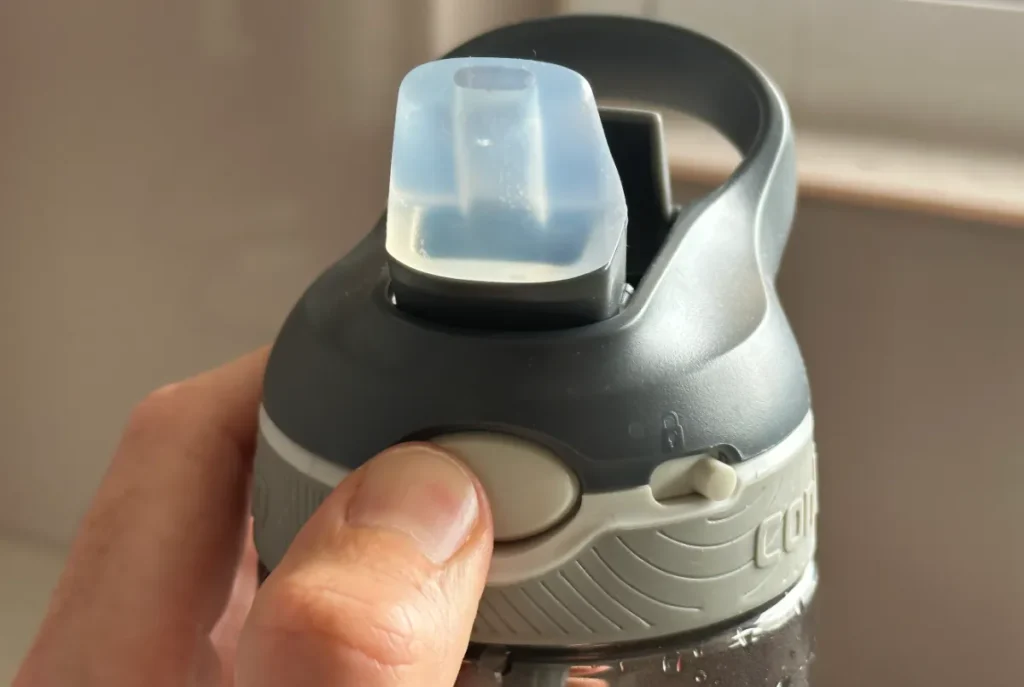
Mold thrives in dark and humid places and your bottle’s lid is the ideal place for it. This is especially true if you have a complex lid with a spout, straw or flip mechanism.
My partner has a CamelBak bottle and we were shocked at the mold accumulation when we opened up the lid because the rest of the bottle seemed fine.
Check out the shocking video below about hidden mold in Contigo bottle lids of this one customer:
How To Prevent and Clean Mold From a Water Bottle
After using reusable water bottles for many years, I’ve figured out how to clean and sanitize mold-ridden ones.
I’ve also determined the best way to prevent mold from forming in the first place:
1. Don’t Keep Stale Water In Your Bottle
Keeping stale water in your bottle sounds disgusting but we’ve all done it.
Each time you drink from your bottle, you introduce contaminants into the water from saliva and pathogens in the air.
This can promote mold growth, making it important to replace the water at least daily, if not more often.
If you've finished using your bottle for the day, even if you aren't ready to clean it yet, it's a good idea to tip out the water and leave it empty with the lid off while it waits to be cleaned. Don't just leave it full of water for days – mold will start to grow.
2. Clean Your Bottle Every 1 To 2 Days
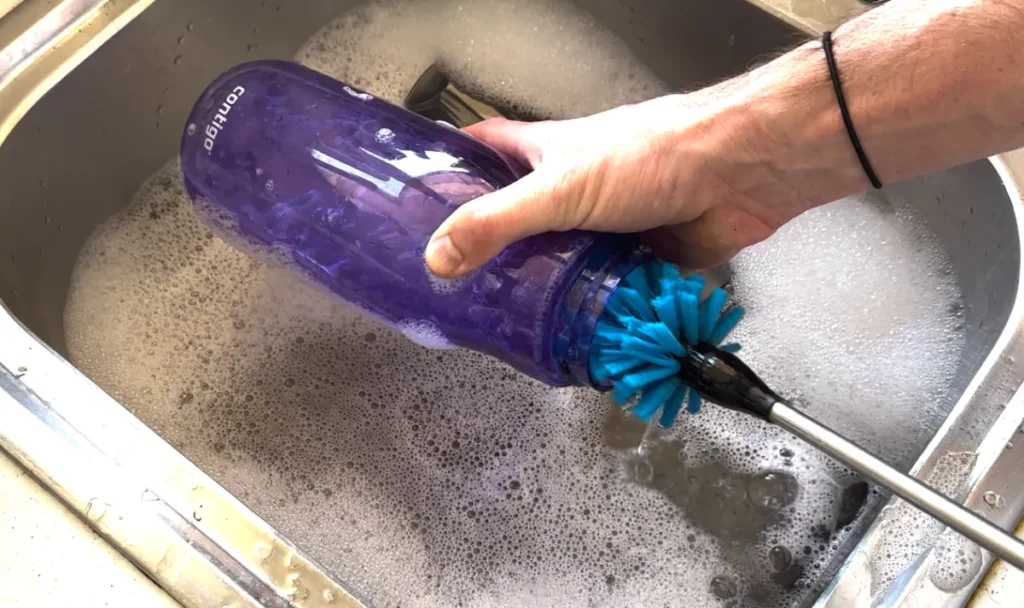
I’ll admit that cleaning my water bottle isn’t one of my favorite tasks.
On the days I don’t feel like cleaning it, I use bottle cleaning tablets (I personally like these ones from Amazon). You simply fill the bottle with fresh water, pop a tablet it and let it work its magic.
All natural, safe, free of odor and harmful ingredients. This is perfect for cleaning tumblers and water bottles giving them a fresh look and smell. No scrubbing required. Made in the USA
Otherwise, clean your bottle in hot water and dish soap or run it through the dishwasher (if it’s dishwasher safe).
Make sure to use a small brush to get into all the nooks and crannies of your bottle and it's lid.
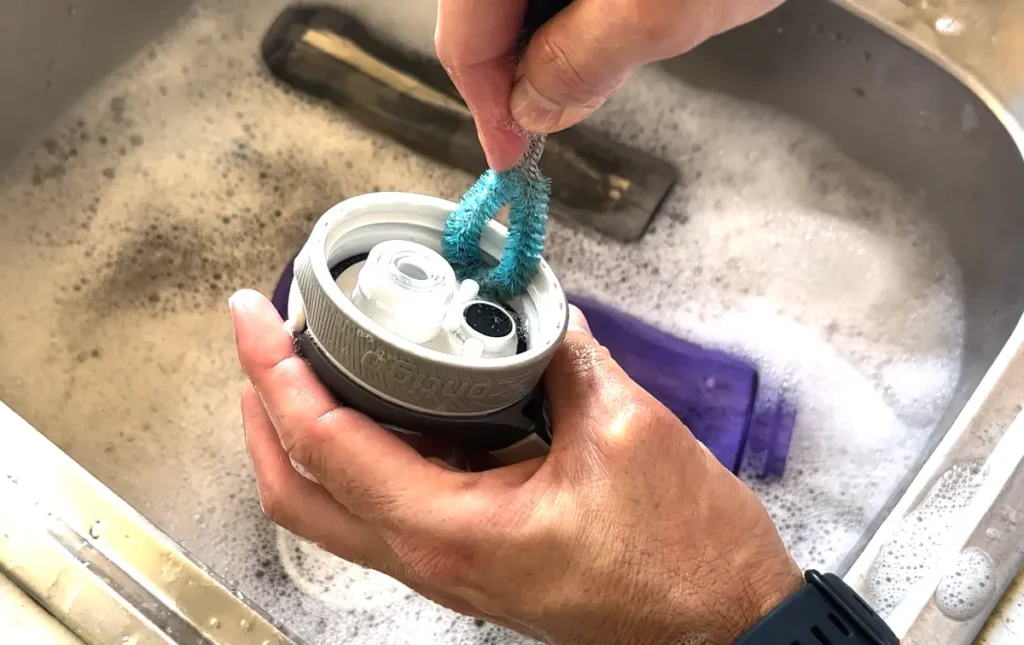
I personally use and like this 3-in-1 bottle brush set from Amazon. It's affordable, has a big brush with a long handle for the water bottle itself and a smaller brush and straw brush for cleaning the lid and smaller parts of the bottle. Otherwise here's a list of the best bottle brushes you can buy.
Three tools in one. Includes a long bottle brush, straw brush and detail cleaner (great for cleaning inside lid gaskets). Comes with organizer ring and storage hook,
Cleaning it often can kill any mold before it gets the chance to increase.
3. Deep Clean and Sanitize Your Bottle Once a Month
Another one of my least favorite tasks is deep cleaning my water bottle but I understand why it’s necessary.
Deep cleaning gets to all the parts you can’t reach with normal cleaning (like the lid) and sanitizes it.
To deep clean your bottle, you’ll need to:
1. Wash the bottle as you normally would. Give your bottle a good wash and scrub in warm soapy water to remove large chunks of mold on your bottle.
2. Clean the lid. This may involve dismantling it. If you have a Contigo bottle, check out my article where I describe how to do this. If you have a straw or spout, use a tiny bottle brush to get to the small crevices.

3. Soak all parts in vinegar. Vinegar is a natural mold killer and soaking all parts of your bottle and lid in vinegar for 30-60 minutes (or overnight) is a great way to kill and remove mold from your bottle.
4. Scrub with baking soda. After the vinegar soap scrub with a baking soda paste to get rid of any remaining mold. Baking soda is also a natural mold killer.
5. Rinse and air dry the bottle and lid thoroughly. This is important because the last thing you need is more mold to grow on your clean bottle.
4.Air Dry Your Bottle and Leave It Open When Not Using It
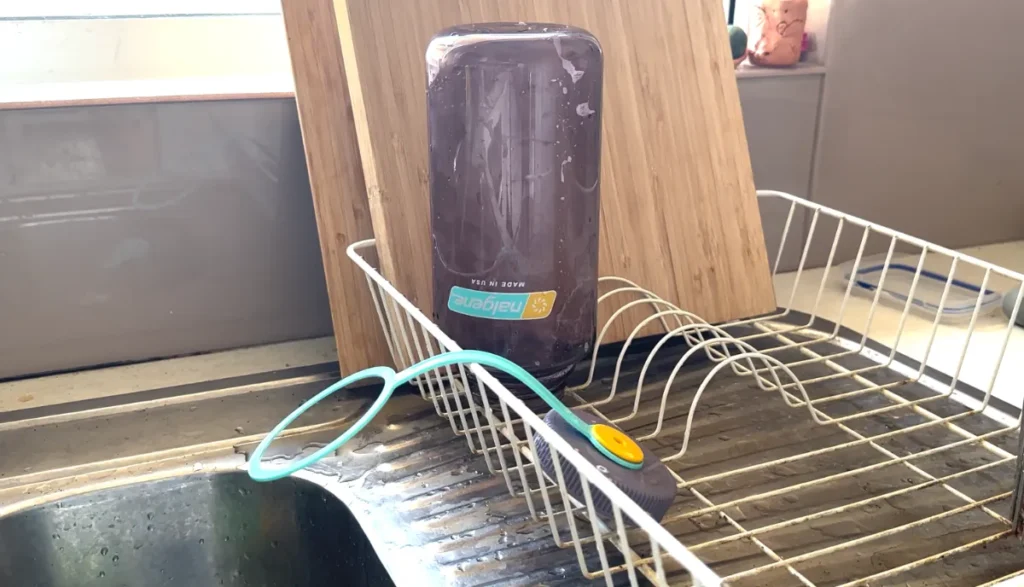
I learned this the hard way. I have cleaned and dried my Yeti bottle and then put the lid on the store the bottle. Months later I opened the bottle and a foul smell came out. Clearly mold was able to grow in the closed bottle.
Mold thrives in dark and moist places, which is exactly what your water bottle is.
After your daily clean and when you’re not using it, store your bottle empty with the lid off.



